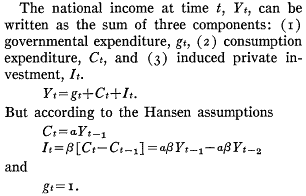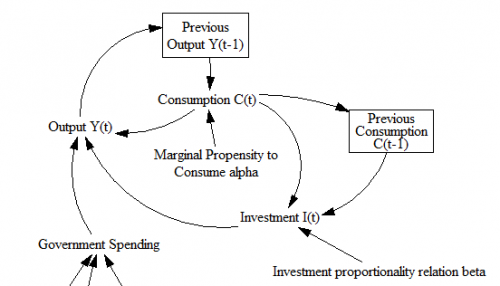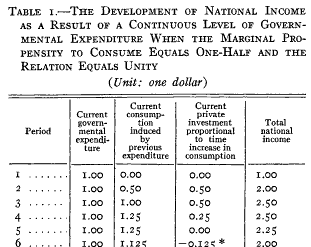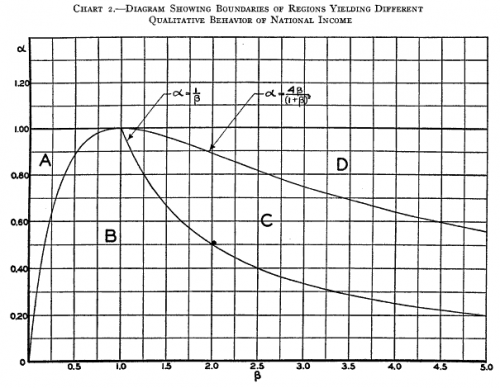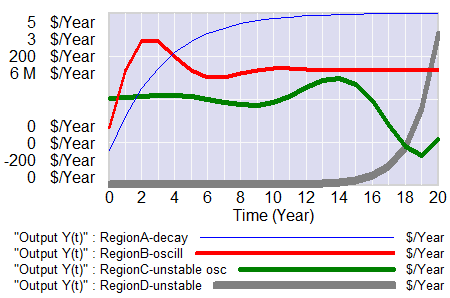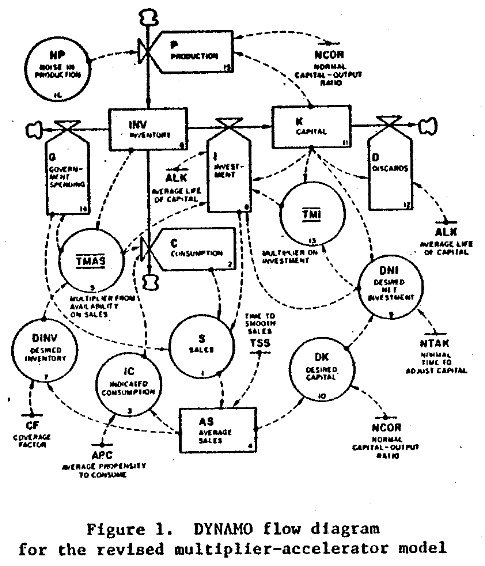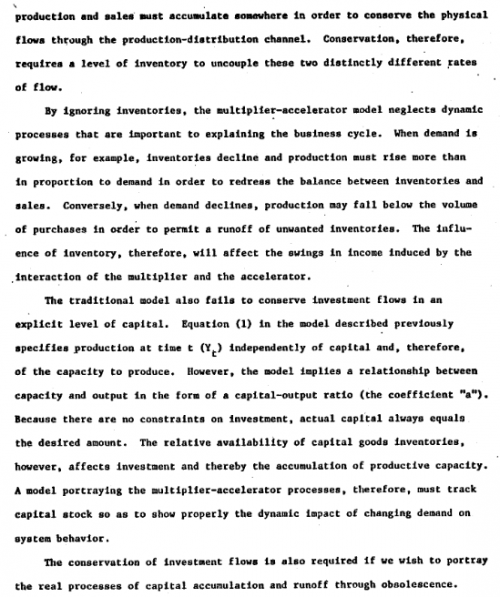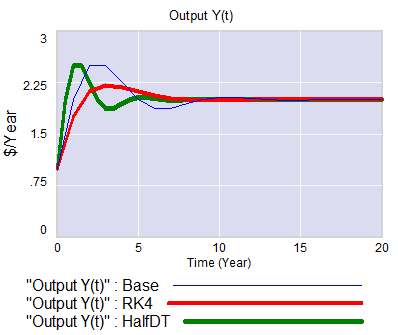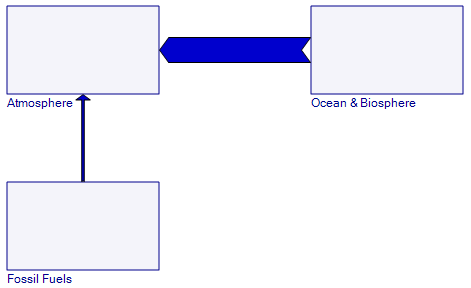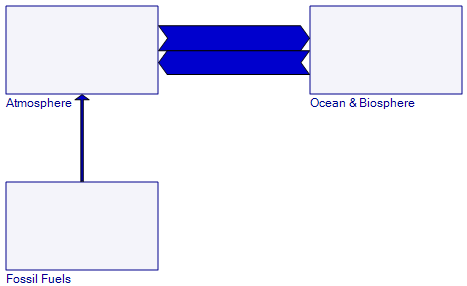There’s a terrific essay on economics by John Kay on the INET blog. Some juicy excerpts follow, but it’s really worth the trip to read the whole thing. They’ve invited some other economists to respond, which should be interesting.
The Map is Not the Territory: An Essay on the State of Economics
by JOHN KAY
The reputation of economics and economists, never high, has been a victim of the crash of 2008. The Queen was hardly alone in asking why no one had predicted it. An even more serious criticism is that the economic policy debate that followed seems only to replay the similar debate after 1929. The issue is budgetary austerity versus fiscal stimulus, and the positions of the protagonists are entirely predictable from their previous political allegiances.
The doyen of modern macroeconomics, Robert Lucas, responded to the Queen’s question in a guest article in The Economist in August 2009.[1] The crisis was not predicted, he explained, because economic theory predicts that such events cannot be predicted. Faced with such a response, a wise sovereign will seek counsel elsewhere.
[…]All science uses unrealistic simplifying assumptions. Physicists describe motion on frictionless plains, gravity in a world without air resistance. Not because anyone believes that the world is frictionless and airless, but because it is too difficult to study everything at once. A simplifying model eliminates confounding factors and focuses on a particular issue of interest. To put such models to practical use, you must be willing to bring back the excluded factors. You will probably find that this modification will be important for some problems, and not others – air resistance makes a big difference to a falling feather but not to a falling cannonball.
But Lucas and those who follow him were plainly engaged in a very different exercise, as the philosopher Nancy Cartwright has explained.[4] The distinguishing characteristic of their approach is that the list of unrealistic simplifying assumptions is extremely long. Lucas was explicit about his objective[5] – ‘the construction of a mechanical artificial world populated by interacting robots that economics typically studies’. An economic theory, he explains, is something that ‘can be put on a computer and run’. Lucas has called structures like these ‘analogue economies’, because they are, in a sense, complete economic systems. They loosely resemble the world, but a world so pared down that everything about them is either known, or can be made up. Such models are akin to Tolkien’s Middle Earth, or a computer game like Grand Theft Auto.
[… interesting discussion of the fiscal crisis as a debate over Ricardian equivalence …]
But another approach would discard altogether the idea that the economic world can be described by a universally applicable model in which all key relationships are predetermined. Economic behaviour is influenced by technologies and cultures, which evolve in ways that are certainly not random but which cannot be described fully, or perhaps at all, by the kinds of variables and equations with which economists are familiar. Models, when employed, must therefore be context specific, in the manner suggested in a recent book by Roman Frydman and Michael Goldberg.[8]
[…]
But you would not nowadays be able to publish similar articles in a good economics journal. You would be told that your model was theoretically inadequate – it lacked rigour, failed to demonstrate consistency. You might be accused of the cardinal sin of being ‘ad hoc’. Rigour and consistency are the two most powerful words in economics today.
[…]
Consistency and rigour are features of a deductive approach, which draws conclusions from a group of axioms – and whose empirical relevance depends entirely on the universal validity of the axioms. The only descriptions that fully meet the requirements of consistency and rigour are complete artificial worlds, like those of Grand Theft Auto, which can ‘be put on a computer and run’.
For many people, deductive reasoning is the mark of science, while induction – in which the argument is derived from the subject matter – is the characteristic method of history or literary criticism. But this is an artificial, exaggerated distinction. ‘The first siren of beauty’, says Cochrane, ‘is logical consistency’. It seems impossible that anyone acquainted with great human achievements – whether in the arts, the humanities or the sciences – could really believe that the first siren of beauty is consistency. This is not how Shakespeare, Mozart or Picasso – or Newton or Darwin – approached their task.
[…] Economists who assert that the only valid prescriptions in economic policy are logical deductions from complete axiomatic systems take prescriptions from doctors who often know little more about these medicines than that they appear to treat the disease. Such physicians are unashamedly ad hoc; perhaps pragmatic is a better word. With exquisite irony, Lucas holds a chair named for John Dewey, the theorist of American pragmatism.
[…] The modern economist is the clinician with no patients, the engineer with no projects. And since these economists do not appear to engage with the issues that confront real businesses and actual households, the clients do not come.There are, nevertheless, many well paid jobs for economists outside academia. Not, any more, in industrial and commercial companies, which have mostly decided economists are of no use to them. Business economists work in financial institutions, which principally use them to entertain their clients at lunch or advertise their banks in fillers on CNBC. Economic consulting employs economists who write lobbying documents addressed to other economists in government or regulatory agencies.
[…]A review of economics education two decades ago concluded that students should be taught ‘to think like economists’. But ‘thinking like an economist’ has come to be interpreted as the application of deductive reasoning based on a particular set of axioms. Another Chicago Nobel Prize winner, Gary Becker, offered the following definition: ‘the combined assumptions of maximising behaviour, market equilibrium, and stable preferences, used relentlessly and consistently form the heart of the economic approach’.[13] Becker’s Nobel citation rewards him for ‘having extended the domain of microeconomic analysis to a wide range of economic behavior.’ But such extension is not an end in itself: its value can lie only in new insights into that behaviour.
‘The economic approach’ as described by Becker is not, in itself, absurd. What is absurd is the claim to exclusivity he makes for it: a priori deduction from a particular set of unrealistic simplifying assumptions is not just a tool but ‘the heart of the economic approach’. A demand for universality is added to the requirements of consistency and rigour. Believing that economics is like they suppose physics to be – not necessarily correctly – economists like Becker regard a valid scientific theory as a representation of the truth – a description of the world that is independent of time, place, context, or the observer. […]
The further demand for universality with the consistency assumption leads to the hypothesis of rational expectations and a range of arguments grouped under the rubric of ‘the Lucas critique’. If there were to be such a universal model of the economic world, economic agents would have to behave as if they had knowledge of it, or at least as much knowledge of it as was available, otherwise their optimising behaviour be inconsistent with the predictions of the model. This is a reductio ad absurdum argument, which demonstrates the impossibility of any universal model – since the implications of the conclusion for everyday behaviour are preposterous, the assumption of model universality is false.
[…]Economic models are no more, or less, than potentially illuminating abstractions. Another philosopher, Alfred Korzybski, puts the issue more briefly: ‘the map is not the territory’.[15] Economics is not a technique in search of problems but a set of problems in need of solution. Such problems are varied and the solutions will inevitably be eclectic.
This is true for analysis of the financial market crisis of 2008. Lucas’s assertion that ‘no one could have predicted it’ contains an important, though partial, insight. There can be no objective basis for a prediction of the kind ‘Lehman Bros will go into liquidation on September 15’, because if there were, people would act on that expectation and, most likely, Lehman would go into liquidation straight away. The economic world, far more than the physical world, is influenced by our beliefs about it.
Such thinking leads, as Lucas explains, directly to the efficient market hypothesis – available knowledge is already incorporated in the price of securities. […]
In his Economist response, Lucas acknowledges that ‘exceptions and anomalies’ to the efficient market hypothesis have been discovered, ‘but for the purposes of macroeconomic analyses and forecasts they are too small to matter’. But how could anyone know, in advance not just of this crisis but also of any future crisis, that exceptions and anomalies to the efficient market hypothesis are ‘too small to matter’?
[…]The claim that most profit opportunities in business or in securities markets have been taken is justified. But it is the search for the profit opportunities that have not been taken that drives business forward, the belief that profit opportunities that have not been arbitraged away still exist that explains why there is so much trade in securities. Far from being ‘too small to matter’, these deviations from efficient market assumptions, not necessarily large, are the dynamic of the capitalist economy.
[…]
The preposterous claim that deviations from market efficiency were not only irrelevant to the recent crisis but could never be relevant is the product of an environment in which deduction has driven out induction and ideology has taken over from observation. The belief that models are not just useful tools but also are capable of yielding comprehensive and universal descriptions of the world has blinded its proponents to realities that have been staring them in the face. That blindness was an element in our present crisis, and conditions our still ineffectual responses. Economists – in government agencies as well as universities – were obsessively playing Grand Theft Auto while the world around them was falling apart.

